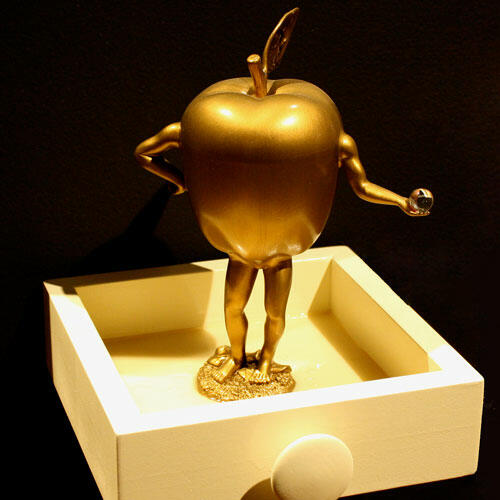Héctor Maldonado
Museo de las Américas, Puerto Rico
The rising career of Héctor Maldonado (Puerto Rico, 1972) has achieved its first great institutional backing with the current exhibition at the Museo las Américas of a comprehensive compendium of his oeuvre under the suggestive title Welcome Home. It may be stated that with the project, the young promising artist enjoys an attempt at an early retrospective, and those of us who have been close to his work know that there are no few reasons for this. It was important to disseminate a work gestated in Miami and which has become increasingly solid, situating Maldonado as one of the main Puerto Rican artists of his generation, in Puerto Rico. Mainly because his stay in North American soil and specifically in a market characterized by multiculturalism, nurtures the already recognized plurality of resources of an artist who is faithful to his origins, but who does not elude the negotiations on identity so inherent in contemporary displacements.

In Welcome Home, the formal diversity essayed by Maldonado since his projects Blood and Toys I and II to his last minute works are grouped together. The curatorial plan has included some of the exponents of the most significant series of different stages: the My Family saga, perhaps the one that best identifies the artist in the face of critique for the particular treatment of the photographic memorabilia which through the psychological manipulation of the portrait conjugates evocation and sociology of the family environment, is shown. The artist is also portrayed in a selection of pieces of the Listen series, devoted to the memories of childhood, and in that attractive Duchampian toyshop capable of idyllically merging ages that the author has baptized Void Toys.
The project has incorporated the most novel element that has come out of his atelier this year. Pieces, for example, such as Carmen, Turning the inner corner and Tensioned under the torn, three canvases of considerable size in which large-format portraits, broken glass and found fragments of wood furniture are mixed together. Another new work is To mother, a triptych which follows the line of symbiosis between narrative figuration and pop close-up so frequented by the artist. And a new family of inspirations, among which I mention Leave it open until all of it dries (2011), reveals an unprecedented way in which the portrait has disappeared and attention travels to the interior architectonic line to recreate the spatial angles of home nostalgia, through the use of dim geometric demarcations in relief that he later covers with an austere palette. The result resembles a huge photographic negative in which he records with Proustian precision the spatial evocations of the family environment. An exploration with which Maldonado seems to aim at the future.
The wide galleries of the Museo de las Américas have been the perfect venue for his large-scale works. It is easy for the viewer to adequately appreciate the trail of the artist’s emotional belonging and become identified with it. A public not alien to this “myth of family” which, as well pointed out by Nereida García Ferraz in the text of the catalogue, is a shared patrimony in Puerto Rican culture. Enough reason for Maldonado’s poetics to feel at home and for the visitor to join the itineraries of memory though it.
-
 Void Toy 7, 2011. Construction/scuptures/ found objects, 10 x 8 ¾ x 8 ¾ in. , Credit and courtesy of the artist. Construcción, esculturas, objetos encontrados, 25,4 x 22,2 x 22,2 cm. Crédito y cortesía del artista.
Void Toy 7, 2011. Construction/scuptures/ found objects, 10 x 8 ¾ x 8 ¾ in. , Credit and courtesy of the artist. Construcción, esculturas, objetos encontrados, 25,4 x 22,2 x 22,2 cm. Crédito y cortesía del artista.




